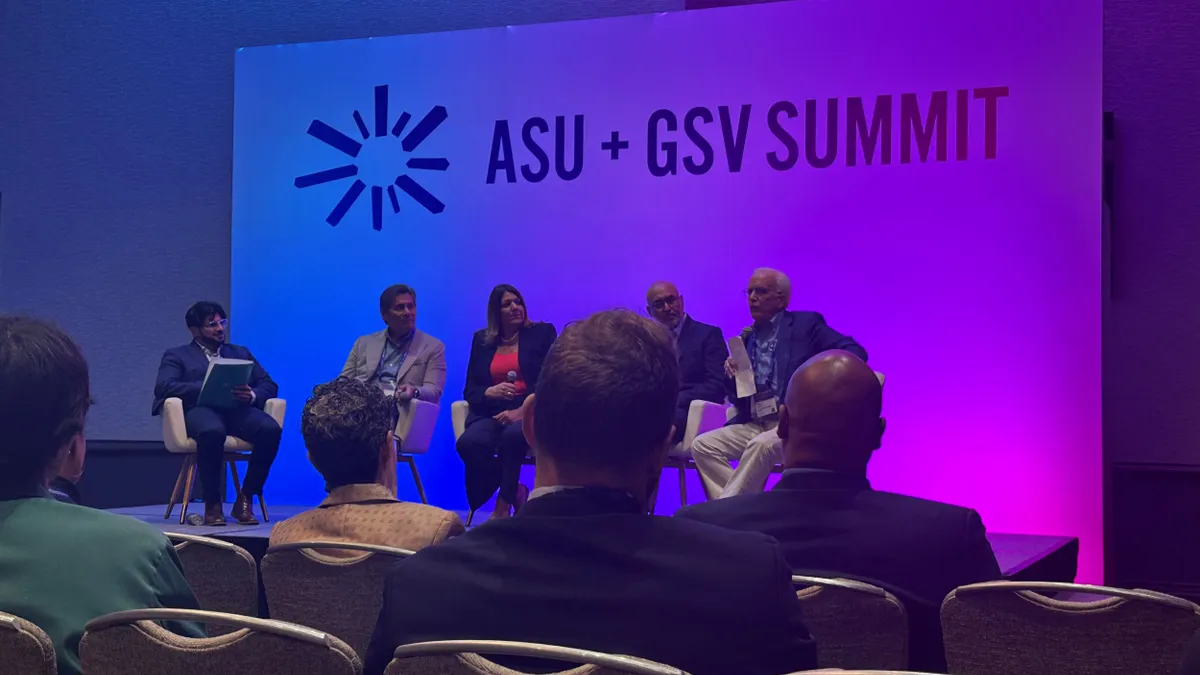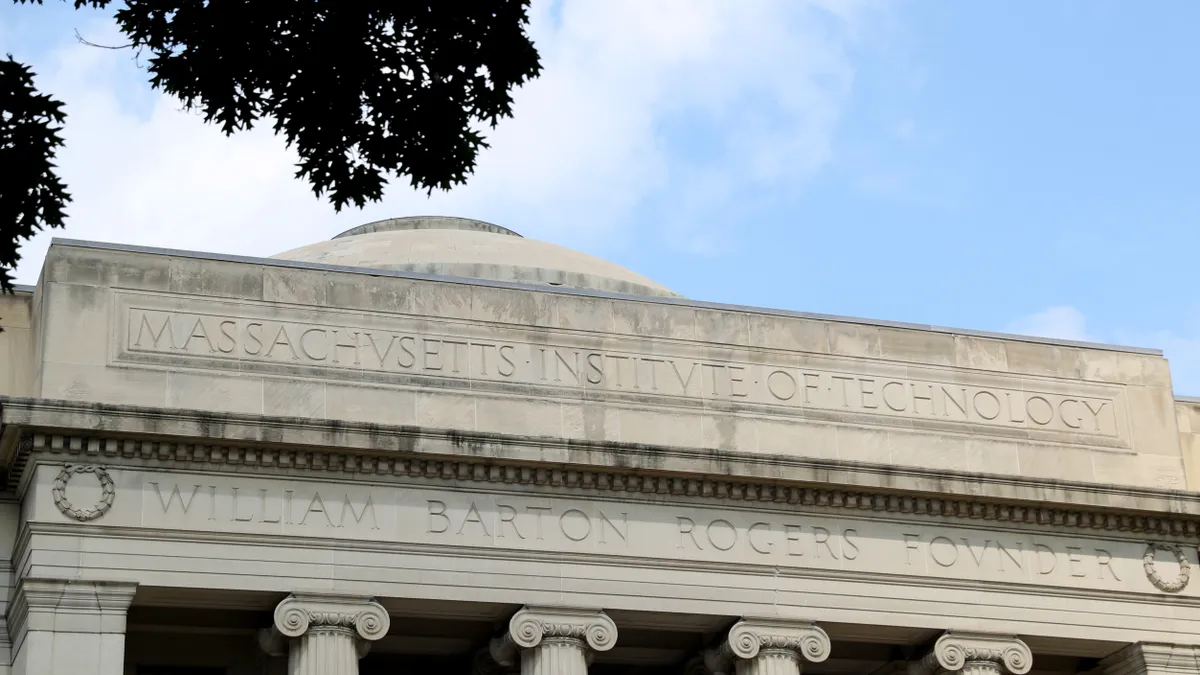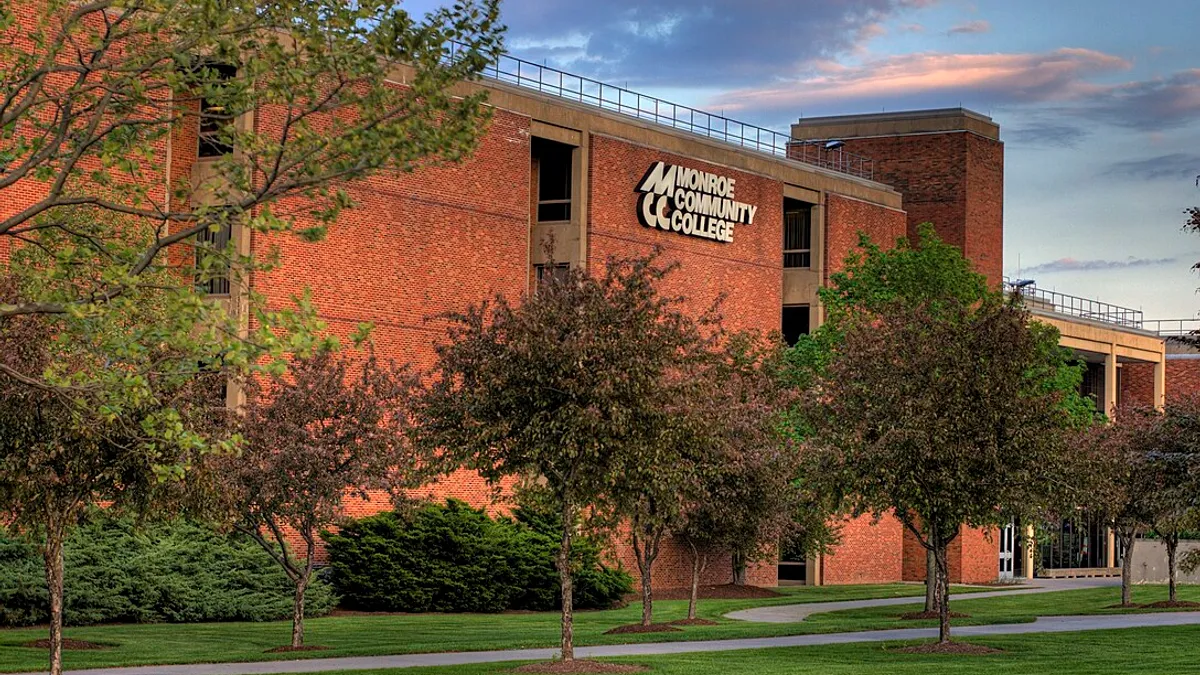SAN DIEGO — How can community colleges deliver economic mobility to their students?
College leaders at this week's ASU+GSV Summit, an annual education and technology conference, got a glimpse into that answer as they heard how community colleges are building support from business and industry and strengthening workforce development.
These types of initiatives may be helping to boost public perception of the value of community colleges vs. four-year institutions.
Last year, 48% of surveyed Americans said they had high confidence in community colleges, compared with just 33% who said the same about four-year colleges, according to a Gallup poll. Moreover, policy analysts often view community colleges as an engine to increase workforce development — though some still say these institutions could do more to help their students.
Below, we’re rounding up four takeaways from community college experts about how these institutions can take steps to boost workforce development.
Bring industry into policy advocacy
In 2023, Texas enacted a new outcomes-based funding formula for the state’s community colleges — a change that came with a $683 million price tag. Rather than basing funding primarily on enrollment, the state now ties the majority of its allocation to performance-based measures, such as how many credentials colleges award in high-demand fields.
As a result of the change, the state’s community colleges saw funding increases in fiscal 2024 ranging from $70,000 to $2.9 million, The Texas Tribune reported last month.
Ray Martinez, president and CEO of the Texas Association of Community Colleges, said unified advocacy from the state’s community college leaders helped the measure gain widespread support from lawmakers.
Community college leaders also drummed up support from businesses to help get the new funding model over the finish line, Martinez said.
“We needed business leaders. We needed K-12 leaders,” Martinez said. “We needed other stakeholders to engage with us and to go to their members, to go to the folks that they knew at the Legislature, and say, ‘This is what we need for economic development and for future economic growth of our state.’”
Look to industry to help create curriculum
It’s not enough for community colleges to merely have business and industry representatives on their advisory councils, Martinez said. Institutions need to forge deeper relationships with these stakeholders, including by having them help craft curriculum for workforce education programs.
Although workforce education programs make up about a quarter of Texas community colleges’ overall offerings, that share is rapidly growing relative to academic programs under the state’s new performance-based funding formula, Martinez noted.
“I'm not sure you can single out an industry that is not changing rapidly because of technology or other reasons,” Martinez said. “If you are not engaging with employers in that constant loop of information, you're missing out as a college.”
Focus on stackable credentials
At Miami Dade College in Florida, leaders are focused on stackable credentials that can be linked together to form an academic pathway.
Stackable credentials represent the “blurring of credit and noncredit,” said Madeline Pumariega, president of Miami Dade College.
“Nobody wakes up in the morning and says, ‘I want to go take a noncredit course,” Pumariega said. Instead, they seek out the quickest training available to land a certain job, she said.
But after students complete that noncredit training, it’s key for community colleges to return to them and say, “‘Great, we got you that training, but you're now a quarter of the way there for a college credit certificate,’” Pumariega said. When students finish a certificate, college leaders can then offer them an associate degree before suggesting a bachelor's program, Pumariega said.
Don’t try to be a university
Community college leaders have at times strived for their institutions to be more like their neighboring four-year universities, said Eloy Ortiz Oakley, president and CEO of College Futures Foundation, which aims to boost credential attainment in California.
“When I started out at community colleges, we were always looking to our sister university,” said Oakley, who previously served as chancellor of the California Community Colleges system. “Well guess what, folks? They need to be more like us now. Okay? They need to be opening their doors to regular working class Americans.”
Community colleges were built to generally serve 100% of students that apply, Oakley noted.
“Community colleges were built to be inclusive, to serve the diversity and to raise the equity of the people in those communities,” Oakley told the conference attendees. “I know, for some, those words have become bad words, but you are the epitome of why equity, diversity and inclusion are an economic imperative, not a woke conversation.”






















